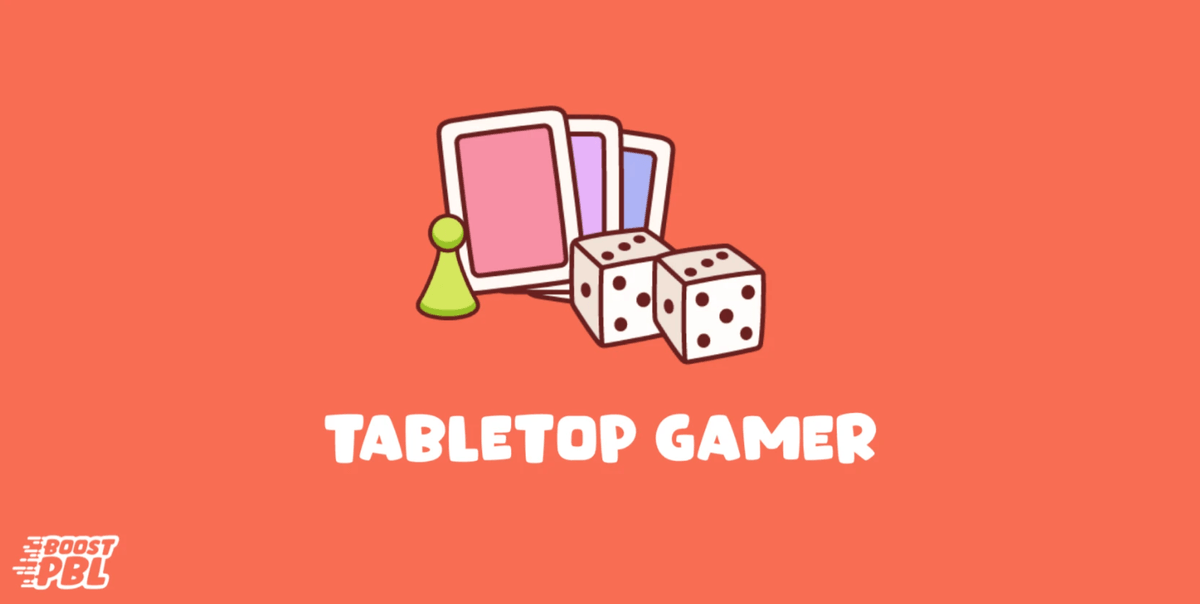
- Standards
- …
- Standards
- Standards
- …
- Standards
Tabletop Gamer
3rd-5th or 6th-8th Full Project, Mini-Project, and Sprint

PBL Experience Overview
1. Project Summary
- Grade Levels: 3rd-5th or 6th-8th Grades
- Theme: Engineering, Creativity, and Intergenerational Design
- Objective: Students design and build a board game that can be enjoyed by both senior citizens and children, focusing on inclusivity, probability, and engagement. The project includes designing rules, creating models, and testing gameplay.
- Duration:
- Full Project: 3 weeks, 30-45 minutes per day
- Mini-Project: 5-7 days, 30-45 minutes per day
- Sprint: 2-3 days, 45-60 minutes per day
2. Standards Alignment
NGSS Standards
- 3-5-ETS1-1: Define a simple design problem that reflects a need or want with criteria for success and constraints on materials, time, or cost.
- Application: Students identify criteria for their board game, such as accessibility for seniors and entertainment for children.
- 3-5-ETS1-2: Generate and compare multiple solutions to a problem.
- Application: Students brainstorm game concepts and evaluate which best meets the needs of their target audience.
- 3-5-ETS1-3: Plan and carry out fair tests in which variables are controlled.
- Application: Students test their board game designs with peers and adjust based on feedback.
- 3-PS2-1 & 3-PS2-2: Investigate motion and stability, focusing on the effects of balanced and unbalanced forces.
- Application: Incorporate elements like dice, spinners, or other mechanics that involve chance and probability.
Common Core ELA Standards
- Writing:
- W.6.2–W.8.2: Write informative and explanatory texts to convey ideas clearly (e.g., game instructions).
- W.6.4–W.8.4: Produce clear, organized writing appropriate to the task and audience.
- Reading:
- RI.6.1–RI.8.10: Analyze and evaluate informational texts to guide research and decision-making.
- Speaking & Listening:
- SL.6.1–SL.8.6: Engage in discussions, present ideas, and adapt speech to different contexts.
Common Core Math Standards
- Statistics and Probability:
- 6.SP.5–8.SP.4: Analyze data collected during gameplay testing to refine the board game design.
- Geometry:
- Explore 2D and 3D shapes in the design of game boards and pieces.
3. Thematic Connections
- Science Concepts:
- Probability and Chance: Explore how probability affects gameplay mechanics and outcomes.
- Forces and Motion: Incorporate mechanics like dice rolls or spinners that depend on motion and balance.
- Math Integration:
- Data analysis: Use feedback and gameplay results to refine design decisions.
- Geometry: Design game boards and components using geometric concepts.
- Social Studies Integration:
- Discuss intergenerational needs and how games foster community and interaction.
- Explore cultural influences on games and how traditions shape entertainment.
- ELA Integration:
- Writing clear and engaging rules for the board game.
- Creating persuasive presentations or advertisements for their game.
4. Benefits of Project-Based Learning
Grades 3-5
- Creative Exploration: Encourages imagination and problem-solving through design.
- Collaboration: Builds teamwork as students brainstorm and prototype together.
- Foundational Skills: Teaches basic concepts of engineering, math, and probability in a fun, accessible way.
Grades 6-8
- Complex Problem-Solving: Challenges students to design for specific needs and constraints.
- Critical Evaluation: Develops skills in testing, analyzing data, and refining prototypes.
- Leadership and Communication: Builds confidence as students present and explain their designs.
5. Additional Benefits
- Engagement: Designing and playing a game appeals to students’ creativity and competitive spirit.
- Inclusivity: Highlights the importance of designing for diverse age groups and abilities.
- Skill Development: Enhances critical thinking, communication, and collaboration.
6. Implementation Examples
- Week 1:
- Introduce the project, including the target audience and design challenge.
- Brainstorm ideas and start researching what makes games engaging.
- Create initial concepts and draft rules for the game.
- Week 2:
- Build prototypes using materials like cardboard, spinners, and dice.
- Test prototypes within groups and gather feedback.
- Refine designs based on feedback and analysis.
- Week 3:
- Finalize game design and create polished instructions.
- Present games to peers, senior citizens, or family members.
- Reflect on the project and its outcomes.
7. Why This Project is Perfect for Grades 3-8
- Grades 3-5: Introduces basic engineering and probability concepts in a fun and interactive way.
- Grades 6-8: Encourages advanced critical thinking, research, and refinement skills while emphasizing communication and teamwork.
The "Tabletop Gamer" project combines creativity, engineering, and social awareness, offering a fun, standards-aligned way for students to develop key skills.
Home
Pricing Plans
Get Started
Contact Us
team@
© BOOST PBL 2024

